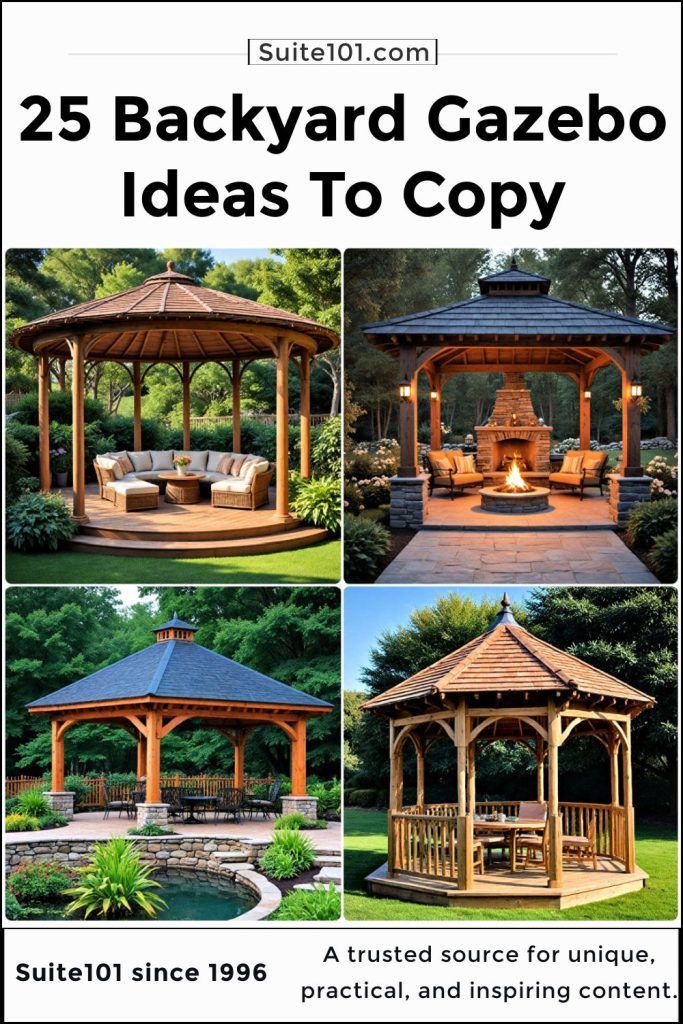A gazebo can transform any outdoor space into a charming and functional retreat. Whether you're looking to create a peaceful spot for relaxation, a shaded area for outdoor dining, or a stylish venue for entertaining guests, a gazebo offers versatility and aesthetic appeal. This article covers everything you need to know about gazebos, including types, materials, design considerations, and tips for maintaining your outdoor structure.
What is a Gazebo?
A gazebo is a freestanding, open-sided structure typically featuring a roof and often found in gardens, parks, and backyards. Gazebos are designed to provide shade, shelter, and a decorative focal point in outdoor spaces. They come in various shapes, sizes, and styles, ranging from simple, functional designs to elaborate, ornate structures.
Types of Gazebos
-
Traditional Gazebos
- Usually octagonal or hexagonal, traditional gazebos are often made from wood and feature a peaked roof.
- These gazebos are commonly found in gardens or parks, adding a classic, romantic touch to the landscape.
-
Pergolas
- Pergolas are open-roof structures with crossbeams that provide partial shade.
- Ideal for growing climbing plants like vines and flowers, pergolas offer a more airy and less enclosed feel compared to traditional gazebos.
-
Pavilions
- Larger and more rectangular, pavilions are perfect for hosting events or covering outdoor living spaces like patios or decks.
- These structures often feature a solid roof and are made from durable materials like wood, metal, or vinyl.
-
Pop-Up Gazebos
- Portable and easy to assemble, pop-up gazebos are great for temporary use, such as picnics, camping, or outdoor markets.
- Typically made from lightweight materials with a fabric roof, they are convenient for on-the-go shade and shelter.
-
Modern Gazebos
- Sleek and minimalist, modern gazebos often feature clean lines, flat roofs, and materials like metal and glass.
- These designs blend seamlessly with contemporary outdoor spaces, offering a stylish yet functional retreat.
Materials for Gazebos
-
Wood
- Wood is a popular choice for its natural beauty and versatility. Cedar, pine, and redwood are common options.
- Wooden gazebos can be stained or painted to match your outdoor decor, though they require regular maintenance to prevent rot and weathering.
-
Metal
- Aluminum and steel gazebos are durable, weather-resistant, and often require less maintenance than wood.
- Metal gazebos can offer a modern or industrial look, with powder-coated finishes available in various colors.
-
Vinyl
- Vinyl gazebos are low-maintenance and resistant to weather, insects, and rot.
- Available in a range of colors, vinyl can mimic the appearance of wood while offering greater durability and longevity.
-
Fabric
- Pop-up and soft-top gazebos often feature fabric roofs made from materials like polyester or canvas.
- While not as durable as wood or metal, fabric gazebos are lightweight, portable, and ideal for temporary use.
Design Considerations
-
Size and Location
- Determine the size of the gazebo based on the available space and intended use. Consider proximity to the house, garden, or other outdoor features.
- Ensure the ground is level and stable to support the structure.
-
Roof Style
- Choose from various roof styles, including peaked, flat, or sloped designs. The roof type can affect both the gazebo's appearance and its ability to withstand weather conditions.
-
Flooring
- Gazebos can be built with or without flooring. Common flooring options include wood, stone, concrete, or composite materials.
- Consider the intended use of the gazebo when selecting flooring; for example, wood decking is ideal for a cozy seating area, while concrete is better for a more permanent structure.
-
Accessories and Features
- Customize your gazebo with features like screens, curtains, lighting, and built-in seating.
- Consider adding a fire pit, outdoor kitchen, or hot tub if you plan to use the gazebo for entertaining.
Maintenance Tips
-
Wood Gazebos
- Regularly clean and seal or paint wooden gazebos to protect against moisture, insects, and UV damage.
- Inspect for signs of rot, warping, or pests, and repair any damage promptly.
-
Metal Gazebos
- Clean metal gazebos with mild soap and water, and inspect for rust or corrosion.
- Apply a protective coating if necessary to prevent rust from developing.
-
Fabric Gazebos
- Remove and clean fabric covers regularly to prevent mold and mildew. Store them indoors during the off-season to prolong their lifespan.
- Inspect the frame for wear and tear, especially in pop-up gazebos, and replace any damaged parts./












